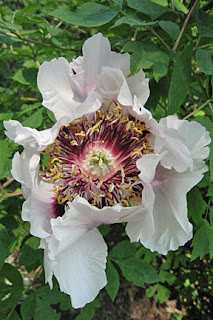By Helen Roberts
The one animal that springs to most people’s mind for eating honey is bears. Especially a particularly round individual who gets his hand stuck in the honey pot numerous times. However, many animals around the world, including raccoons, skunks, opossums and honey badgers, feast on honey. They brave the fury of the hive to not only get at the sweet sticky stuff, but for the protein obtained from eating the bees and larvae themselves. We humans are fussier and prefer to stick to just the honey, though some people will eat honey on the comb.
For centuries, honey has been recognised not only for its culinary uses but its medicinal uses, due to its antimicrobial properties. The potential scope of honey in medicine is vast and still developing despite its use since ancient times; the ancient Egyptians and Greeks commonly used honey to treat wounds. Research into the medicinal properties of honey is ongoing and not only restricted to its use in promoting wound healing, but also its potential as an anti-inflammatory, anti-fungal, treatment for burns, aid in the treatment of chronic rhinosinusitis and combatant against the bacterial biofilms that can form in urinary catheters.
The sticky issue of Manuka honey
 |
| Manuka flowers (Leptospermum scoparium). Photo credit: FlowerGirl on Flickr [CC BY-ND 2.0] |
Manuka honey (MH) is a monofloral honey produced in New Zealand and is made exclusively by European honey bees from the flowers of the Manuka bush, Leptospermum scorparium. MH is also produced in other countries, such as Australia and even in the UK, although it could be argued that this is not the ‘real deal’, having not come from New Zealand. In fact, there is currently an acrimonious disagreement between Australian and New Zealand honey producers over the right to market MH. New Zealand producers want exclusive trademarks on MH and Australian apiarists are fighting this, arguing that MH has been used in Australia since 1831, 8 years before New Zealand even got European honey bees. The bitter battle ensues.
The ‘essence’ of Manuka honey
The unique antibacterial properties of MH are attributable to the organic compound called methylglyoxal (MGO), which comes from the conversion of dihydroxyacetone (DHA) – a simple carbohydrate that is found in the nectar of Manuka flowers. DHA is one of the markers used to grade MH on a scale known as the UMF, or Unique Manuka Factor. Manuka honey needs a minimum rating 10 UMF to be labelled as Manuka.
Microbiologist Dr Rowena Jenkins, Lecturer at Cardiff Metropolitan University, and her research team have discovered numerous health benefits of using MH, which has been supported by clinical trials. This is an opportune moment for research into non-antibiotic agents as more antibiotic resistant pathogens emerge. Jenkins and her team are particularly interested in how MH might help battle the most challenging infectious agents…the ‘superbugs’.
Meticillin-resistant Staphylococcus aureus (MRSA) is the ‘superbug’ many of us associate with health care facilities. Jenkins’ team is exploring how MH wipes out MRSA that have infected wounds sites by preventing the bacteria from dividing. In addition, Jenkins highlighted the potential for MH to be used in combination with antibiotics to stop the growth of MRSA.
If you’re interested in learning more about the ongoing research into honey, on the 24th of August, Dr Rowena Jenkins will be a guest speaker at the University of Bristol Botanic Garden Science Picnic. Visitors can relax in the garden and engage with Rowena in an informal discussion about her ongoing research into the health benefits of honey. It’s a rare opportunity to mingle with the scientists working on the edge of cutting research. You can book your place at the University of Bristol’s online shop.
Helen Roberts is a trained landscape architect with a background in plant sciences. She is a probationary member of the Garden Media Guild and a regular contributor to the University of Bristol Botanic Garden blog.
References:
Adams, C.J., Manley-Harris, M. and Molan, P.C. 2009. The origin of methylglyoxal in New Zealand Manuka (Leptospermum scoparium) honey. Carbohydrate Research, 344(8):1050-1053.
Jenkins, R., Burton, N. and Cooper, R. 2011. Manuka honey inhibits cell division in methicillin-resistant Staphylococcus aureus. Journal of Antimicrobial Chemotherapy, 66(11): 2536-2542.
Roberts, A.E.L., Brown, H.L., Jenkins, R.E. 2015. On the antibacterial effects of Manuka honey: mechanistic insights. Research and Reports in Biology, (6): 215-224.



